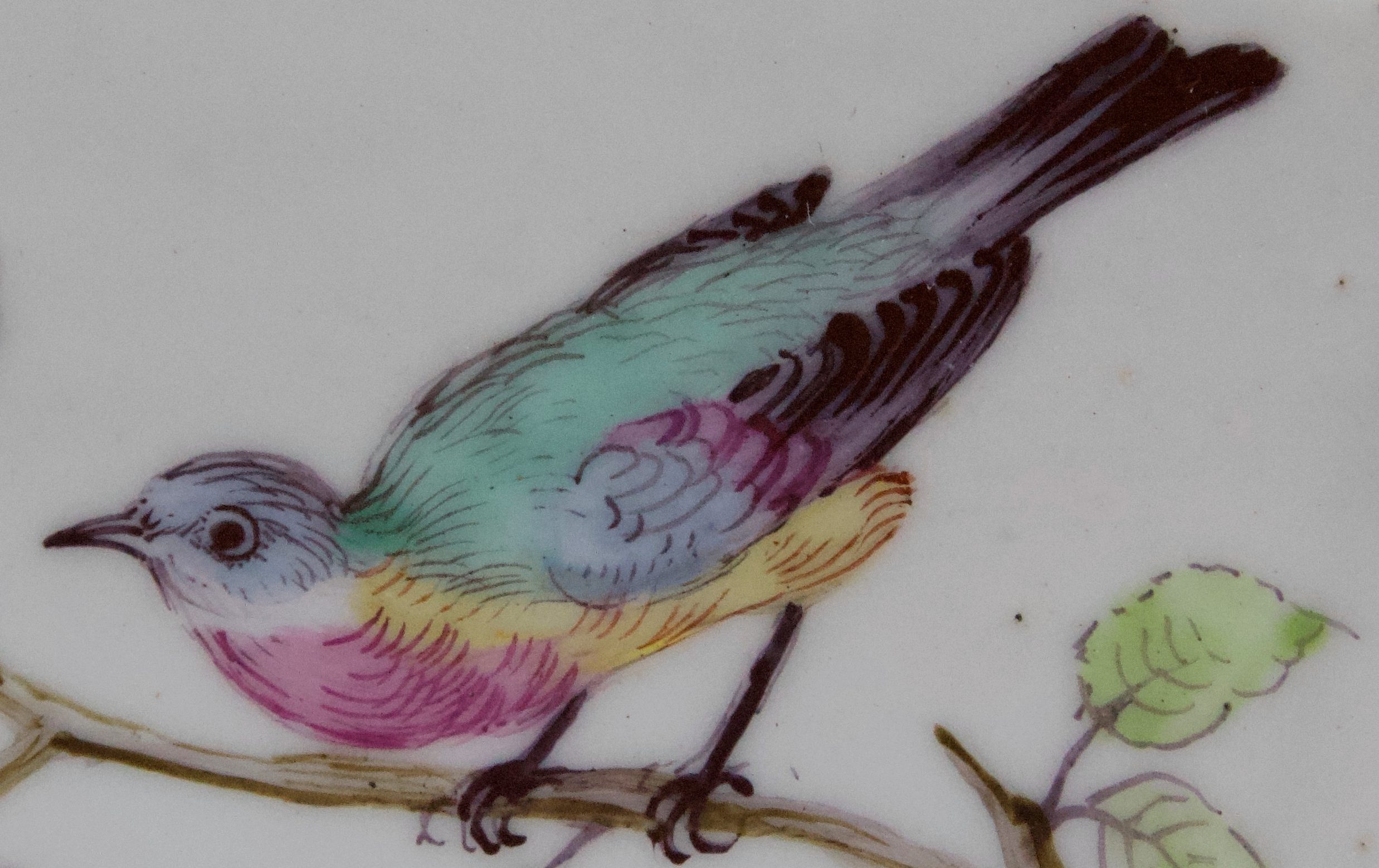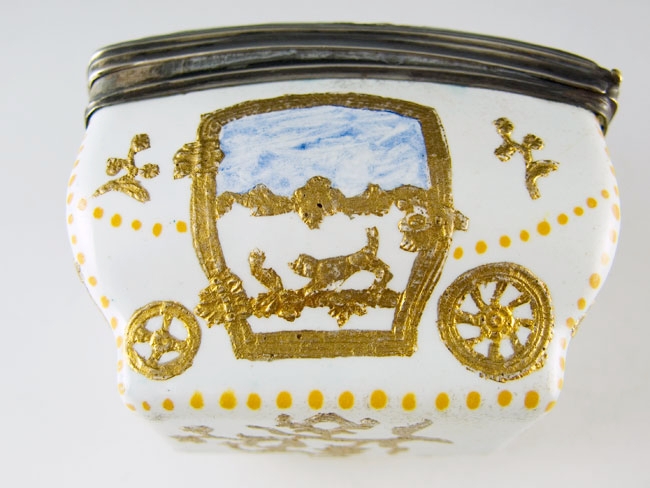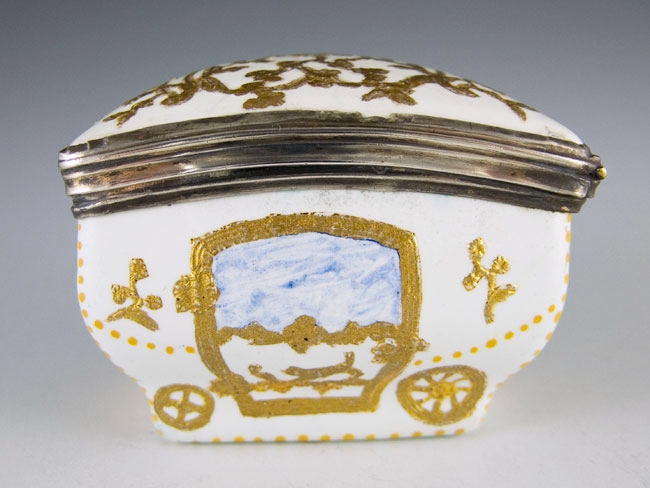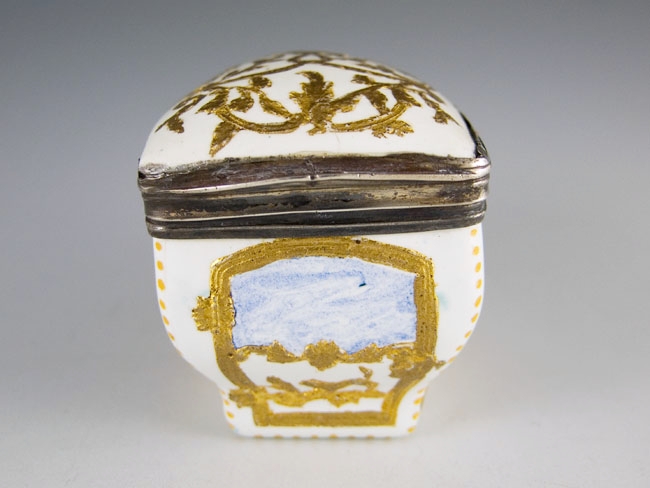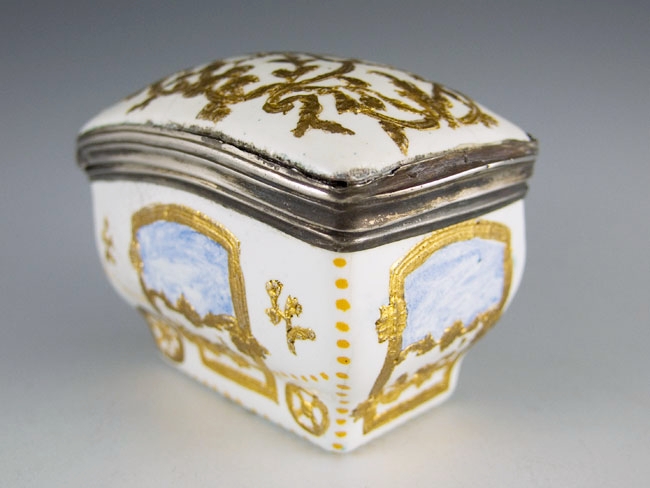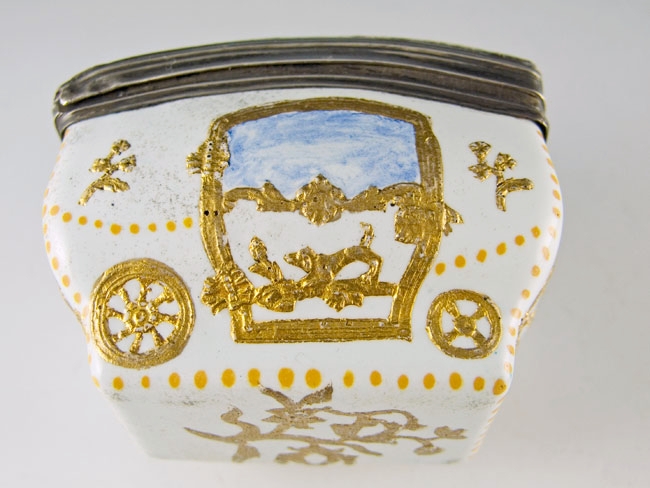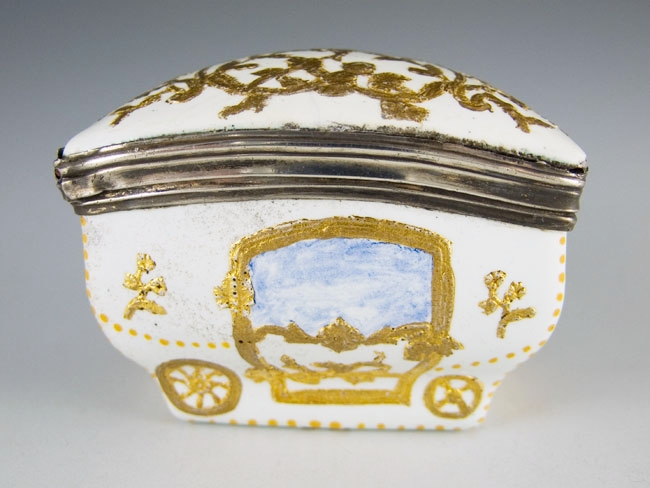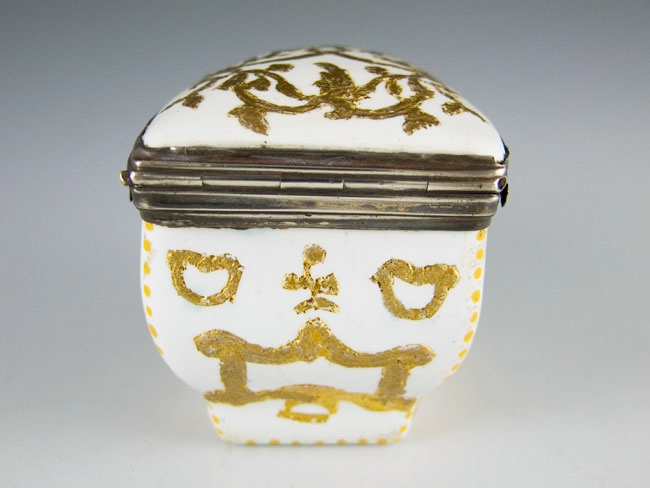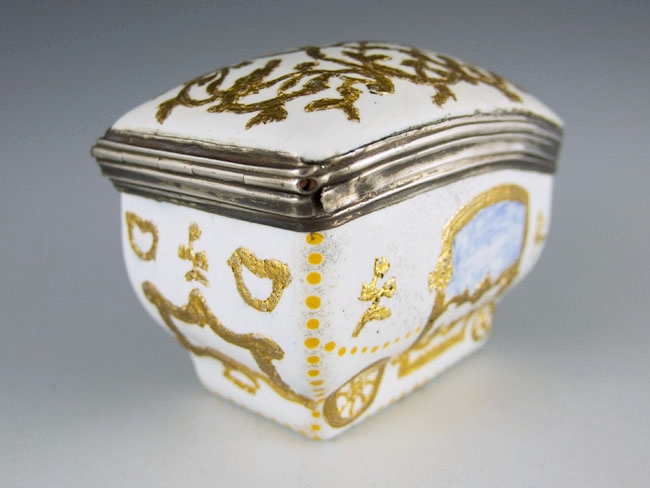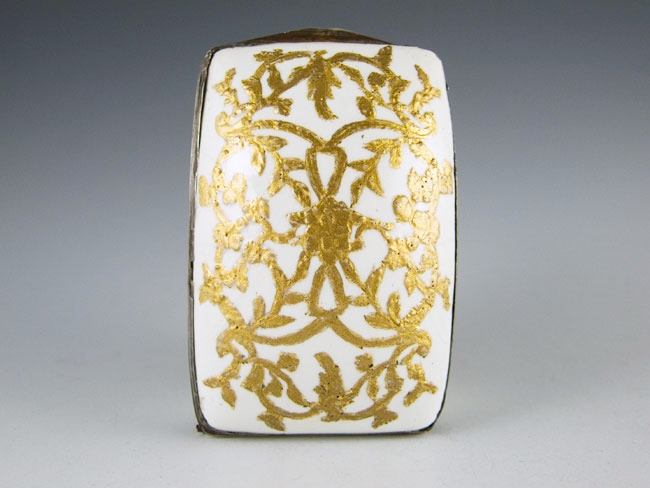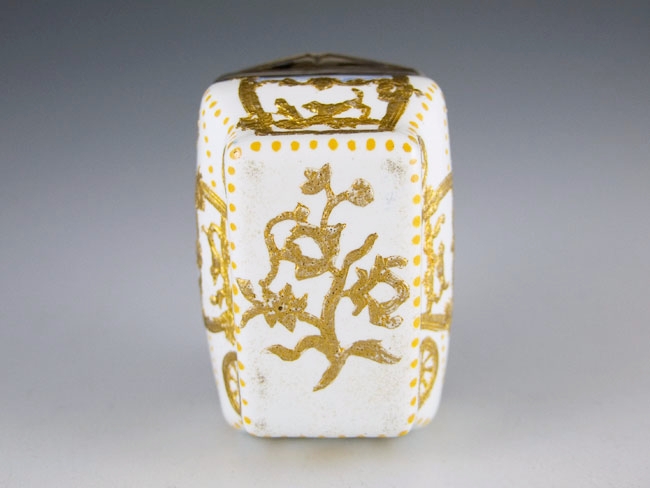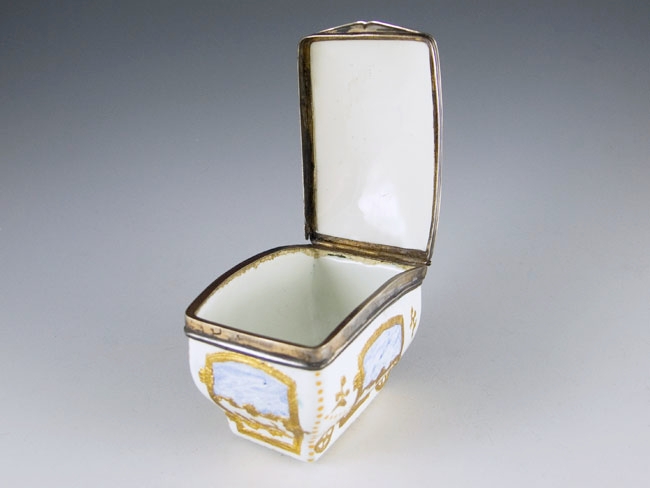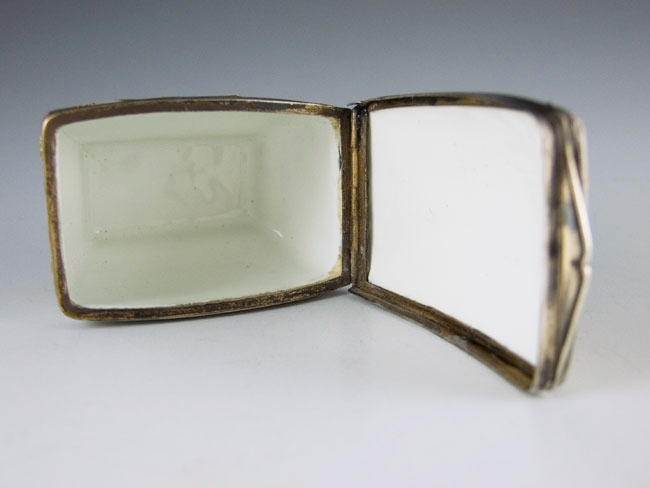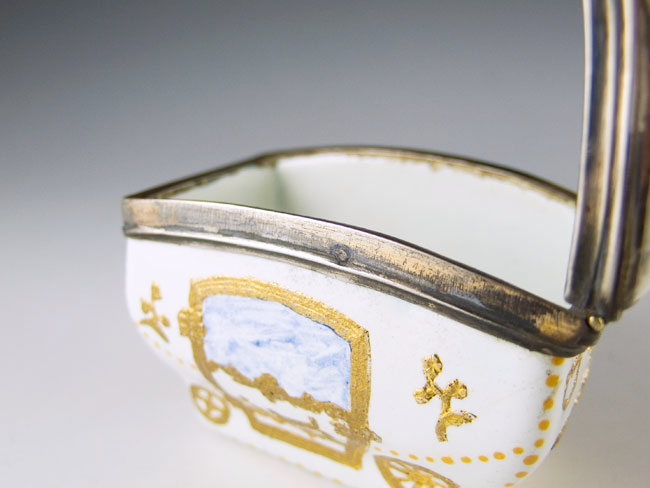A French enamel Bonbonnière or Snuff Box, Paris, circa 1750
This enchanting bonbonnière or snuff box of bombé form dates from the reign of Louis XV. The sides are decorated as a four-wheeled carriage in raised gilt (gold foil) scrollwork, the windows on three sides heightened with a blue wash. Three sides of the carriage are decorated with a dog engaged in a playful bow. The hinged cover has an elaborate foliate design, and the base a floral spray. In addition to the gold, yellow enamel dots are arranged around the sides and edges.
The marked silver mounts with a flanged thumbpiece include a Paris discharge mark for 1750-56.
A bonbonnière or snuff box of sedan chair form and similar decoration and date is in the Robert Lehman Collection, at New York’s Metropolitan Museum of Art (Accession Number: 1975.1.1551).
Traditionally, white enamel on copper boxes such as this, with encrusted gold-foil decoration, have been attributed to Germany. The Berlin workshop of the Huguenot goldsmith Pierre Fromery (1685-1738) was particularly renowned for wares of this type and signed examples do exist. A number of such boxes have French silver mounts, and it would not be unusual for Parisian marchands-merciers to import enamel boxes for the purpose of having them mounted with silver rims, prior to selling them to their wealthy Parisian clientele. The German attribution was compounded by the fact that no French or Parisian enamelling workshops were known.
Recent research, however, has shed new light on the matter. A watchcase in the Walters Art Museum, Baltimore, decorated with foil encrustation and signed by a craftsman, G. Bouvier (active in Paris c.1740) indicates local activity on a commercial level. It is also possible that the Paris sous-fermier Antoine Leschaudel, may have been manufacturing enamel wares of this type, as well as fitting them, and French porcelain, with silver mounts. Stylistic considerations must also take into account the playful French Rococo aesthetic, quite unlike some of the earlier more Baroque German designs.
Condition: Very good – the encrusted gold-foil decoration is in excellent, unworn condition, and the white enamel body has only a few very faint and short cracks. The wear to the base corners is entirely consistent with the age and purpose of this item. No major damage and no restoration. One minute loss to a section of the silver mount. The hinged mechanism works well and the cover closes neatly.
Dimensions: Length (at cover) 5.9 cm; Width (at cover) 3.7 cm; Height (to top of cover) 4.3 cm
Ref. See Christies, Important Gold Boxes, Objects of Vertu and Portrait, London, December 10, 2002, lot 12, for a similarly decorated box in the form of a shoe, bearing the discharge mark for Antoine Leschaudel, 1744-50.
English Enamel Boxes From the Eighteenth to the Twentieth Centuries, Susan Benjamin (Little, Brown, 1978).
Eighteenth Century Gold Boxes of Europe, A. Kenneth Snowman (Antique Collectors’ Club, 1990).
